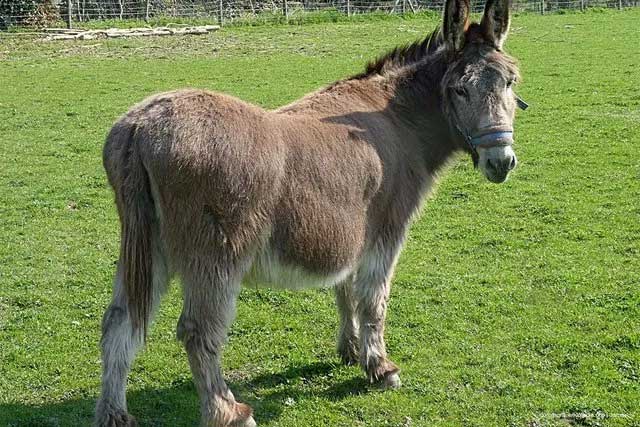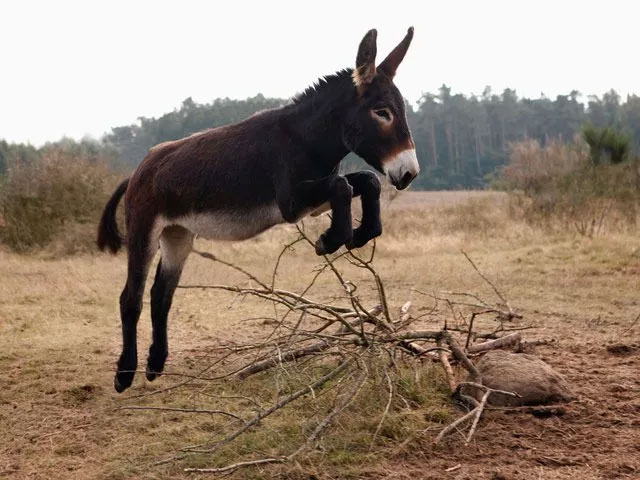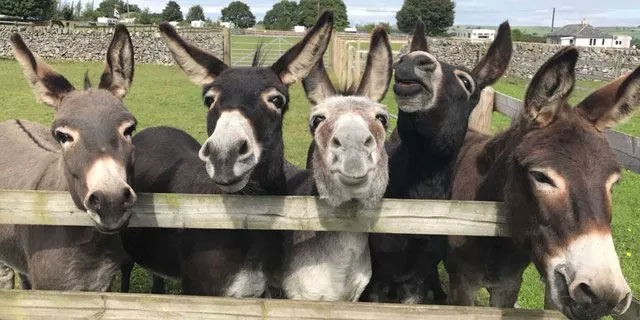Although the reasons behind the initial domestication of donkeys remain unclear, according to Science News, this event appears to be linked to the expanding and increasingly arid Sahara Desert.
For thousands of years, donkeys have played a crucial role in advancing human civilizations. These animals have assisted humans in pulling wheeled vehicles, transporting tourists, and moving goods across the globe.
However, the origins and timing of the domestication of these animals remain a mystery. Researchers have now utilized the genetic data of over 200 donkeys to trace their domestication and discovered a significant event that occurred around 7,000 years ago in East Africa—approximately 3,000 years before humans domesticated horses. The research team published their findings, detailing the history of the donkey, in this month’s issue of Science.

It is estimated that over 50 million donkeys are used for labor worldwide, predominantly in developing countries where they are regarded as pack animals and transporters.
Co-author Samantha Brooks, a horse researcher at the University of Florida, stated: “Through their DNA, these animals can tell their own history. We often only understand the human aspect of history through written records, but of course, written history does not always accurately capture how something happened. By examining these DNA sequences, we can find biological evidence of the environment these animals lived in and the experiences they survived.”

The loud and prolonged bray of a donkey can last up to 20 seconds and can be heard up to 3 kilometers away, allowing them to communicate with their companions across vast desert spaces. Their large ears also help them hear sounds from a distance.
Researchers examined the genomes of 207 modern donkeys living in 31 countries worldwide. They also analyzed the genomes of 15 wild donkeys and 31 donkeys that lived in the past, dating back approximately 4,000 to 100 years. The research team reconstructed the evolutionary tree of this species and used computer models to pinpoint the exact domestication event when herders in Kenya and the Horn of Africa domesticated wild donkeys. They then traced how this species spread to the rest of the continent and reached Europe and Asia about 2,500 years later.
“This is the story of donkeys… and the details are truly remarkable,” said Greger Larson, an evolutionary biologist at the University of Oxford in England, who was not involved in the study, to Elizabeth Pennisi of Science.

Domesticated donkeys are social animals, and if they have paired or are part of a herd, they will show affection by grooming, sleeping, and foraging together.
The findings revealed additional aspects of the animal’s history: for instance, at what appears to be a donkey breeding center in ancient Rome located in northeastern France, humans bred African and European donkeys together to create “giant donkeys,” Science reported. These animals are nearly 10 inches—about 25 cm—taller than a standard donkey.
While the reasons for the initial domestication remain unclear, Freda Kreier of Science News reported that this event coincided with the Sahara becoming increasingly expansive and arid.
Co-author Ludovic Orlando, an evolutionary biologist at Paul Sabatier University in France, stated: “Donkeys are champions in carrying loads and have a unique ability to traverse deserts. Prehistoric people may have relied on donkeys for transport as the Sahara was expanding.”

Donkeys can recognize and remember the faces of their friends even after long periods apart. They can even remember the faces of people they are connected with after many years and express excitement if they had a good relationship with them in the past.
Currently, no genomes have been published from donkeys located south of the equator in Africa. However, understanding where this species was first domesticated could guide archaeologists to a narrower area to search for deeper insights into the initially domesticated donkeys.
The authors write: “This study not only helps us understand the genetic makeup of donkeys but also reveals their contributions to human history and may improve our management of them in the future as climate change alters the planet’s environment. Currently, there are about 50 million donkeys living on Earth, and they remain vital for agriculture and transportation.”

In the desert, donkeys help other animals find water by digging up to 1.8 meters underground to locate groundwater. This has aided many desert-dwelling animals, as these water holes are crucial during the hottest and driest days of summer.
Emily Clark, a livestock geneticist at the University of Edinburgh in Scotland, who was not involved in the research, told Science News: “Donkeys are extraordinary working animals and are essential for the livelihoods of millions of people worldwide. We owe a debt of gratitude to domesticated donkeys for their role in shaping society.”


















































